Serving 769 students in grades 6-8, L. Douglas Wilder Middle School ranks in the bottom 50% of all schools in Virginia for overall test scores (math proficiency is bottom 50%, and reading proficiency is bottom 50%).
The percentage of students achieving proficiency in math is 47% (which is lower than the Virginia state average of 54%). The percentage of students achieving proficiency in reading/language arts is 51% (which is lower than the Virginia state average of 69%).
The student:teacher ratio of 15:1 is higher than the Virginia state level of 14:1.
Minority enrollment is 85% of the student body (majority Black), which is higher than the Virginia state average of 56% (majority Black).
Quick Stats (2025)
- Grades: 6-8
- Enrollment: 769 students
- Student:Teacher Ratio: 15:1
- Minority Enrollment: 85%
- Overall Testing Rank: Bottom 50% in VA
- Math Proficiency: 47% (Btm 50%)
- Reading Proficiency: 51% (Btm 50%)
- Science Proficiency: 55-59% (Top 50%)
- Source: National Center for Education Statistics (NCES), VA Dept. of Education
School Overview
L. Douglas Wilder Middle School's student population of 769 students has stayed relatively flat over five school years.
The teacher population of 51 teachers has declined by 13% over five school years.
Grades Offered
Grades 6-8
(offers virtual instruction)
(offers virtual instruction)
Total Students
769 students
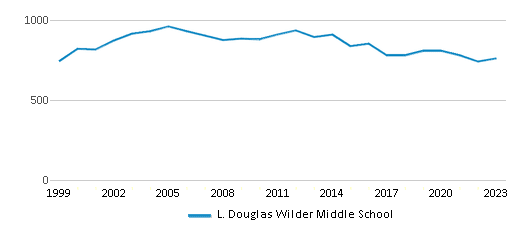
Gender %
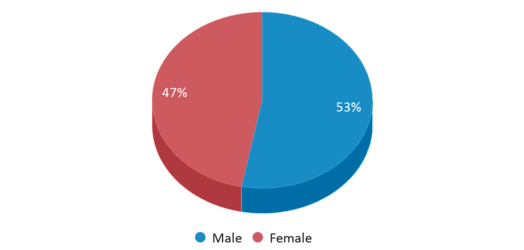
Total Classroom Teachers
51 teachers
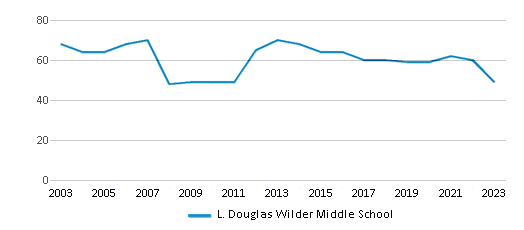
Students by Grade
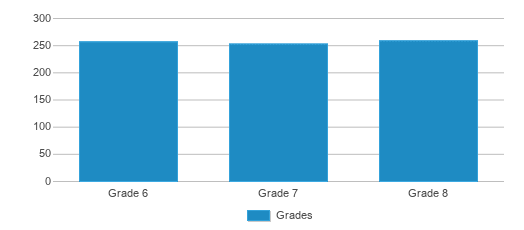
School Rankings
L. Douglas Wilder Middle School ranks within the bottom 50% of all 1,792 schools in Virginia (based off of combined math and reading proficiency testing data).
The diversity score of L. Douglas Wilder Middle School is 0.54, which is less than the diversity score at state average of 0.72. The school's diversity has stayed relatively flat over five school years.
Overall Testing Rank
#1360 out of 1792 schools
(Bottom 50%)
(Bottom 50%)
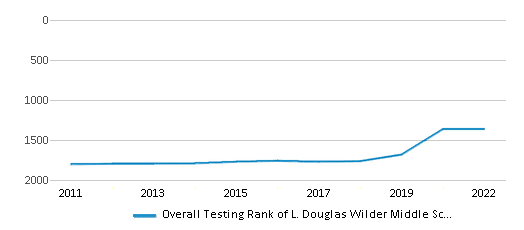
Math Test Scores (% Proficient)
(20-21)47%
54%
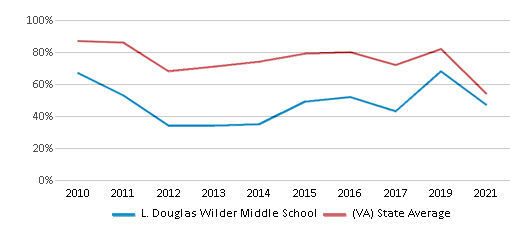
Reading/Language Arts Test Scores (% Proficient)
(20-21)51%
69%
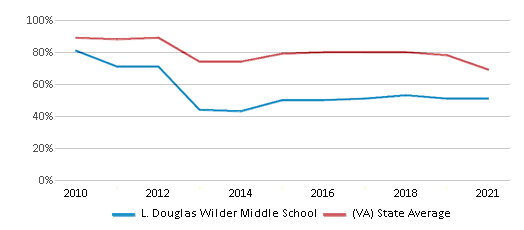
Science Test Scores (% Proficient)
(20-21)55-59%
59%
Student : Teacher Ratio
15:1
14:1
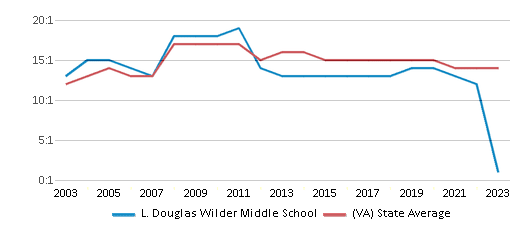
American Indian
n/a
n/a
Asian
11%
8%
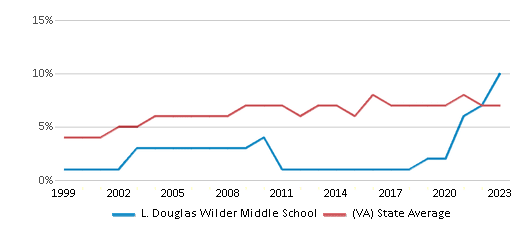
Hispanic
5%
19%
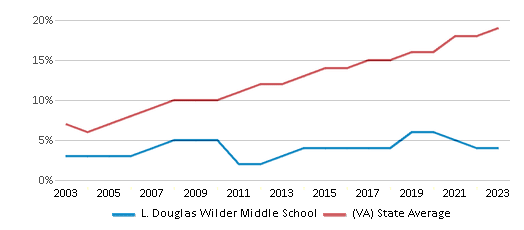
Black
65%
22%
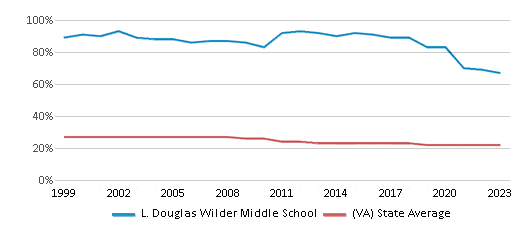
White
15%
44%
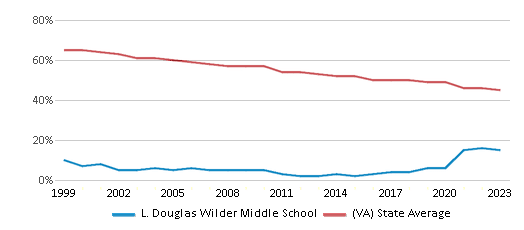
Hawaiian
n/a
n/a
Two or more races
4%
7%
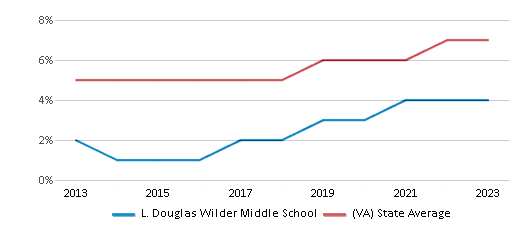
All Ethnic Groups
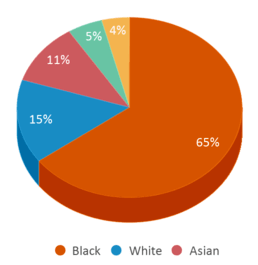
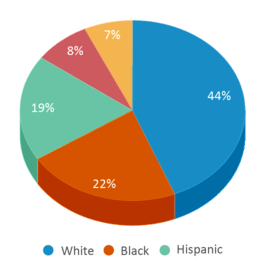

Eligible for Free Lunch
92%
55%
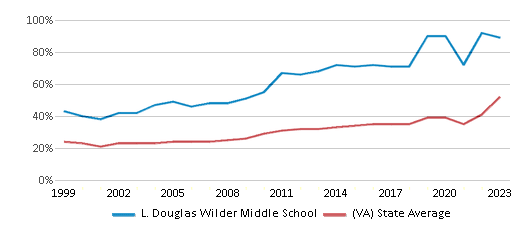
Eligible for Reduced Lunch (20-21)
7%
6%
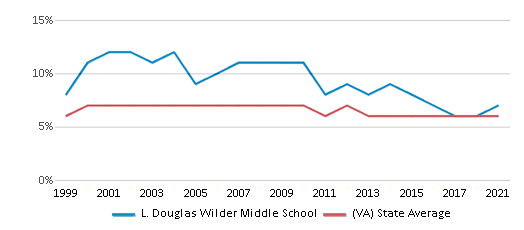
School Statewide Testing
School District Name
Source: National Center for Education Statistics (NCES), VA Dept. of Education
Profile last updated: 02/09/2025
Frequently Asked Questions
What is L. Douglas Wilder Middle School's ranking?
L. Douglas Wilder Middle School is ranked #1360 out of 1,792 schools, which ranks it among the bottom 50% of public schools in Virginia.
What schools are L. Douglas Wilder Middle School often compared to?
L. Douglas Wilder Middle Schoolis often viewed alongside schools like George H. Moody Middle School by visitors of our site.
What percent of students have achieved state testing proficiency in math and reading?
47% of students have achieved math proficiency (compared to the 54% VA state average), while 51% of students have achieved reading proficiency (compared to the 69% VA state average).
How many students attend L. Douglas Wilder Middle School?
769 students attend L. Douglas Wilder Middle School.
What is the racial composition of the student body?
65% of L. Douglas Wilder Middle School students are Black, 15% of students are White, 11% of students are Asian, 5% of students are Hispanic, and 4% of students are Two or more races.
What is the student:teacher ratio of L. Douglas Wilder Middle School?
L. Douglas Wilder Middle School has a student ration of 15:1, which is higher than the Virginia state average of 14:1.
What grades does L. Douglas Wilder Middle School offer ?
L. Douglas Wilder Middle School offers enrollment in grades 6-8 (offers virtual instruction).
What school district is L. Douglas Wilder Middle School part of?
L. Douglas Wilder Middle School is part of Henrico County School District.
School Reviews
4 11/2/2018
I am a new 6th grader at Wilder. It has a great opportunity for gifted 6th graders. The program I attend is called GYSA. I have made many friends in less than 5 whole weeks.
5 10/29/2013
I am a PROUD parent of a seventh grade student at Wilder Middle School. I would like to say that since entering the 6th grade a WMS my son has had a great experience with faculty, staff and students alike. I want to say that the teachers, support staff and the administration work hard to give the students what they deserve in a good education and a safe enviroment. They work hard daily to changing the negative image and the negative publicity that it sometimes receive. By no means am I saying that Wilder Middle School is "perfect", however, what I am saying is that it is a school taking great strides to a positive future for the students currently attending and the students to come!!!!!!
Review L. Douglas Wilder Middle School. Reviews should be a few sentences in length. Please include any comments on:
- Quality of academic programs, teachers, and facilities
- Availability of music, art, sports and other extracurricular activities
Recent Articles

What Is A Charter School?
Explore the world of charter schools in this comprehensive guide. Learn about their history, how they operate, and the pros and cons of this educational innovation. Discover key facts about charter schools, including admission policies, demographics, and funding, as well as what to look for when considering a charter school for your child.

10 Reasons Why High School Sports Benefit Students
Discover the 10 compelling reasons why high school sports are beneficial for students. This comprehensive article explores how athletics enhance academic performance, foster personal growth, and develop crucial life skills. From improved fitness and time management to leadership development and community representation, learn why participating in high school sports can be a game-changer for students' overall success and well-being.

February 05, 2025
Understanding the U.S. Department of Education: Structure, Impact, and EvolutionWe explore how the Department of Education shapes American education, from its cabinet-level leadership to its impact on millions of students, written for general audiences seeking clarity on this vital institution.






